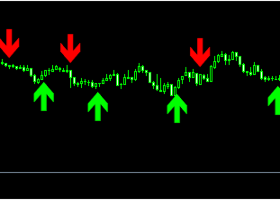According to NAB, there is limited scope for further gains in the residential
property segment given that the Australian residential property price growth has
continued to surpass expectations in recent quarters.
NAB has thus reduced its forecasts for detached house price growth in 2016.
National house price growth forecast
Prices are now forecast to increase 2% in 2016. The forecast for average national house price growth in 2016 has been lowered to 2.3%, from 3.0%, following an expected 9.9% for 2015. The slowdown in average national house price growth to 2.3% in 2016 is attributed to the moderation in price growth in both Sydney and Melbourne.
More modest price gain can be expected in 2016. Modest income growth coupled with lower population growth will ensure the rates of house price growth seen in Sydney and Melbourne do not continue. Regulatory changes to address risks in housing credit have also tightened conditions in the mortgage market. This is likely to have some impact on housing demand. However, what must be noted is that housing affordability has not deteriorated as much as price to income ratios would suggest.
The Westpac-Melbourne Institute survey of consumer sentiment states that households consider it to be a pretty poor time to buy a property. There are signs that elevated prices are discouraging home buyers and cooling the housing market in the process.
Sharp correction of prices not expected
Pent-up demand and lower interest rates will ensure that only a substantial shock to the labour market and/or sharp increase in interest rates will trigger significant declines in house prices. Sharp correction in prices cannot be expected given supportive market fundamentals as well as continued foreign demand for new dwellings.
NAB has thus reduced its forecasts for detached house price growth in 2016.
National house price growth forecast
Prices are now forecast to increase 2% in 2016. The forecast for average national house price growth in 2016 has been lowered to 2.3%, from 3.0%, following an expected 9.9% for 2015. The slowdown in average national house price growth to 2.3% in 2016 is attributed to the moderation in price growth in both Sydney and Melbourne.
More modest price gain can be expected in 2016. Modest income growth coupled with lower population growth will ensure the rates of house price growth seen in Sydney and Melbourne do not continue. Regulatory changes to address risks in housing credit have also tightened conditions in the mortgage market. This is likely to have some impact on housing demand. However, what must be noted is that housing affordability has not deteriorated as much as price to income ratios would suggest.
The Westpac-Melbourne Institute survey of consumer sentiment states that households consider it to be a pretty poor time to buy a property. There are signs that elevated prices are discouraging home buyers and cooling the housing market in the process.
Sharp correction of prices not expected
Pent-up demand and lower interest rates will ensure that only a substantial shock to the labour market and/or sharp increase in interest rates will trigger significant declines in house prices. Sharp correction in prices cannot be expected given supportive market fundamentals as well as continued foreign demand for new dwellings.


